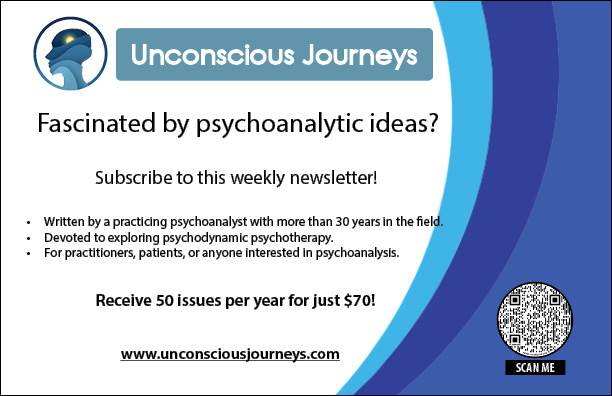Reactions to Intensive Short-Term Dynamic Psychotherapy (ISTDP)
Saturday, September 17, 2016
Glendale, California
Dear Readers:
I blog this morning to share I share my fairly strong negative reaction to a conference on ISTDP I attended yesterday entitled, “A Day with a Master Allan Abbass, MD: Treating Personality Disorders and Fragility.” In the meeting, held in West Los Angeles at the New Center for Psychoanalysis (NCP), Dr. Abbass presented sets of video-taped sessions with a few different patients. He included a power-point presentation in which he described specific technical interventions like “bracing” and phenomena like “thresholds.”
As I pointed out during question and answer periods, Dr. Abbass repeatedly “led the witness.” He refused to see how this was occurring. For example, he referred to a patient’s persecutory projections emerging in the course of a session. I agree such projections emerged, but they occurred, in part, in reaction to Dr. Abbass’ repeatedly questioning and confronting the female patient. In other words, an immediate context existed for what developed in the transference. He was unable to acknowledge how his “riding,” even “badgering,” patients contributed to their anger at him.
To Dr. Abbass’ credit, he modeled closely monitoring transference, bringing patients’ attention to their immediate experiences (cognitions, emotions), breaking through defenses and the like. He clearly intends to help. According to research he conducts, ISTDP is extremely effective.
To his further credit, his type of psychotherapy breaks through defense mechanisms, elicits anxiety surrounding underlying conflicts, and brings emotions related to those conflicts or other trauma quickly to the surface. Furthermore, the methodology responds to critiques of less-structured interventions. Some believe traditional psychoanalytic psychotherapy enhances defenses and wastes valuable time and money by the more meandering approach. This is indeed a risk of the more client-centered psychotherapies, such as promoted by Carl Rogers or, in general, the more customary psychoanalytic approaches.
Nonetheless, the downside of ISTDP is considerable. Most mental health professionals agree that psychoanalytic approaches should also enhance patients’ sense of agency, autonomy, and authenticity. The few sessions I observed yesterday displayed the opposite. Patients quickly learned, consciously or unconsciously, the therapists’ desire for them to feel emotional and, even more significantly, to feel anger towards the therapist. One of my old supervisors would have viewed Dr. Abbass’ work as taking over the ego of the patient, i.e. moving the muscle rather than bolstering the patients’ own muscular capacity.
Worse, ISTDP betrays a certain authoritarian, almost fascist interaction. I found it curious that Dr. Abbass would allow himself to be billed as a “Master.” No wonder patients’ end-of-treatment self-report inventories reveal immense change in them: They understand the unconscious contract regarding how to perform, and they comply — a result suggesting more iatrogenesis than real personal growth.
I advocate a more collaborative, patient approach, one promoting patients’ personal agency. I hope and trust that ISTDP practitioners, particularly when working in settings free from the arbitrary cut-off of 20 sessions, would attend to, and build up, patients’ autonomy.
With best wishes on this sunny Saturday morning,
Alan
Like this post? Subscribe to Psychoanalyzing Life.




